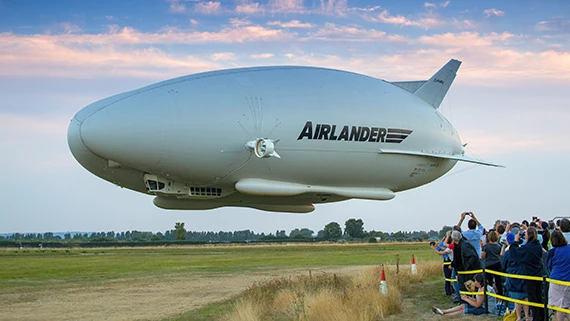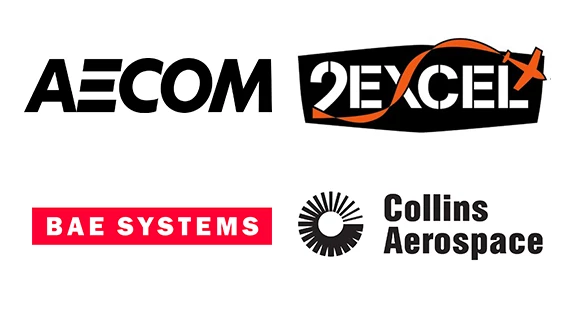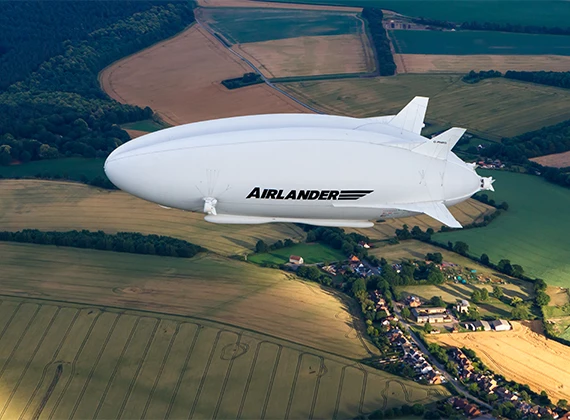
Airlander’s hybrid aircraft technology delivers a new category in aviation with the potential to make air services more efficient, more available, more equitable and more sustainable. Airlander connects the unconnected, overcoming bottlenecks in today’s transport systems, delivering new economic opportunities in underserved places, and breaking the link between air services and emissions.
We are making this vision a reality by designing and manufacturing the world’s most efficient large aircraft and making it free of the need for airports and runways. We are Rethinking the Skies to enable a future of zero-emission air services.
Conventional airfreight might be fast, but it comes with high cost and high carbon footprint. For large cargos or remote destinations, today’s air transport won't do the whole job. Surface transport can take weeks and be prone to delay and disruption. Because of this, the vast majority of world freight volume goes over the surface and only the most time-sensitive one percent travels by air.
Flying can be the quickest form of transport, but it has a large impact on the environment. Surface transport can be much slower, and relies on major infrastructure. As a result, jet aircraft are often used even over very short distances, while elsewhere regions are left to rely only on surface transport.
Aircraft carry sensors that can see for miles, but can't keep them airborne for long. Ships and ground vehicles can stay in place for days or weeks carrying more and larger sensors, but their view is limited by the horizon. As a result, coastguards and militaries struggle to maintain their view of the world, needing ever more aircraft, ships and ground sensors to provide the coverage they need, while large parts of the globe have poor links to communications networks.
Airlander fills this gap to solve these problems across over $1tn identified addressable markets. Airlander:

Around $1.4bn of Airlander 10 aircraft have been reserved by initial customers including Air Nostrum, Europe’s largest privately owned regional airline. Our Airlander 50 programme is supported by a powerful group of development partners including Highlands and Islands Airports Ltd, AECOM, Blue Skies Holdings, and, Infinergy. We’re delivering alongside established industry leaders who share our vision of sustainable air services, including AECOM, Collins Aerospace, BAE Systems and 2Excel Aviation.
Airlander uses helium to provide a head start against gravity without floating like an airship. Its lifting wing shape provides the additional lift to get airborne. It combines the efficiency of an airship with the flexibility to operate from any flat surface like a helicopter. This sets it apart from traditional airship designs which continue to be pursued by our competition. We believe that their airborne efficiency will always be compromised by difficult and expensive ground handling.
Our team contains the best of aerospace and lighter-than-air industry experience, and we're ready for our next challenge - building a production line for 24 aircraft per year, certifying Airlander 10, and delivering it to its first customers in 2028.

We’ve flown Airlander at full-scale, and used our knowledge to define the production standard aircraft and set out its path to certification. Far larger than air-taxis, with multiple roles and markets, and ready to enter service in 2028, Airlander is at the leading edge of new aerospace.